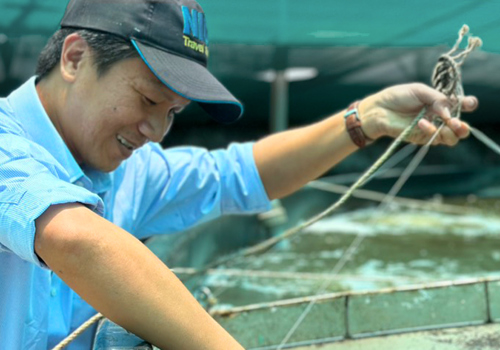
Post Larvae Hatchery
Preparing shrimp for next production stage
Main target in this stage
Post-Larvae growth focus
After their final metamorphosis, shrimp enter the post-larval (PL) stage, remaining in the hatchery until PL 6-8 or PL 10-12. At this stage, they resemble a tiny adult shrimp and adopt a benthic (bottom-dwelling) lifestyle, settling on the pond or tank bottom. The primary goal is to produce strong, robust PLs, requiring feed that reaches the bottom to support optimal growth and ensure successful transition to the next production stage.
Feed in this stage
Shrimp hatchery feeds evolve into crumble form and gradually increase (from ~50 to 500 µm), requiring water stability and slow sinking to the bottom. They should include attractants, palatants, and high digestible protein to boost intake, reduce leaching, and enhance nutrient absorption. Optimized feeding ensures healthier, faster-growing shrimp with better feed utilization and lower overall costs.
Monitoring water quality in the tank
In the hatchery the shrimp are in tanks without water refreshment. Keep adding water until the shrimp are ready to be moved. Keep oxygen levels optimal and stable to ensure healthy development of the larvae. Air stones or tubes are used for aeration keeping turbulence low. When adding water, do it in a steady way which does not cause too much turbulence. Pay attention to chlorine in water.
Check the larvae before transfer
To ensure shrimp larvae are disease-free and strong before transferring to the nursery, you can carry out a combination of visual assessments, behavioral observations and laboratory tests. Also check if the intestine is full for a sign of heathy eating. Sample at least 100 larvae from different parts of the tank to get an accurate assessment. Use sterile tools and minimize stress during handling.
FREQUENTLY ASKED QUESTIONS
Key questions in the post larvae hatchery stage
Using probiotics (mainly heterotrophic bacteria) can help to control nitrate, nitrite and ammonia accumulation, by breaking down organic matter. Shrimp produce nitrates and ammonia; these accumulate in the system, since there is little to no water exchange, which can lead to toxic concentrations. Probiotics also help against the accumulation of pathogenic bacteria, such as vibrio spp. through competitive exclusion.
Talk to our Shrimp Experts